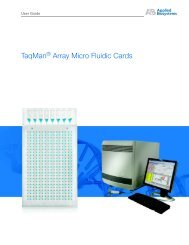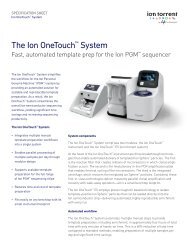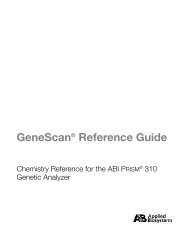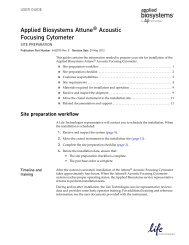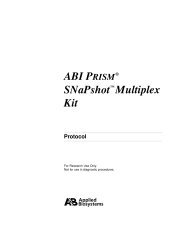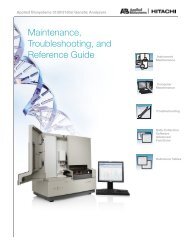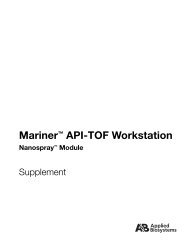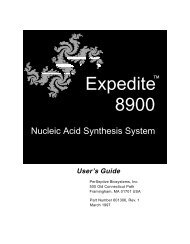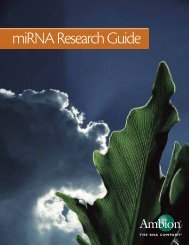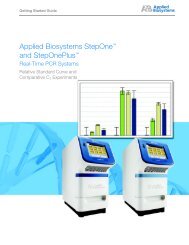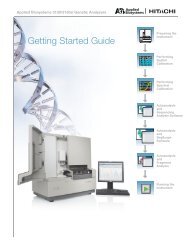Applied Biosystems SOLiD™ 4 System SETS Software User Guide ...
Applied Biosystems SOLiD™ 4 System SETS Software User Guide ...
Applied Biosystems SOLiD™ 4 System SETS Software User Guide ...
Create successful ePaper yourself
Turn your PDF publications into a flip-book with our unique Google optimized e-Paper software.
D<br />
Appendix D Advanced Topic: Primary Analysis<br />
Understanding quality values in the SOLiD <strong>System</strong><br />
together can estimate whether there is a localized problem over the<br />
whole sample (larger deviation with no outliers), a regional problem<br />
(outlier population that spans channels), or a transient problem<br />
(outliers in a single channel).<br />
A difference with the blur metric, however, is that whereas the blur<br />
metric is constant over the number of beads present in a panel, the<br />
exposure is more sensitive to the number of beads. A baseline<br />
exposure value per channel is determined based on a sampling<br />
strategy, but panels with either significantly more or fewer beads can<br />
be affected differently. As with the blur value, the reported value is<br />
the largest mean exposure value of the four channels over all panels<br />
in the sample.<br />
Understanding quality values in the SOLiD <strong>System</strong><br />
The SOLiD primary analysis software analyzes the raw image data<br />
collected by the system and generates a color-space read for each tag.<br />
The software generates a quality value (QV) for each color call,<br />
which is an estimate of confidence for that color call.<br />
The SOLiD 4 <strong>System</strong> QVs are similar to those generated by Phred<br />
and the KB Basecaller software for capillary electrophoresis<br />
sequencing. The quality value q for a particular call is<br />
mathematically related to its probability of error p.<br />
The algorithm used to predict QVs for the SOLiD 4 <strong>System</strong> is<br />
similar to Phred and the KB Basecaller software. (Refer to the<br />
paper, Ewing B., Green P., 1998, Base-calling of automated<br />
sequencer traces using Phred. II. Error probabilities. Genome<br />
Research 8:186-194.)<br />
The algorithm relies on training or calibration to a large set of control<br />
data and color calls for which the correct call is known. In the<br />
SOLiD 4 <strong>System</strong>, the correct call is determined by mapping the<br />
read to a known reference sequence.<br />
180 <strong>Applied</strong> <strong>Biosystems</strong> SOLiD 4 <strong>System</strong> <strong>SETS</strong> <strong>Software</strong> <strong>User</strong> <strong>Guide</strong>



